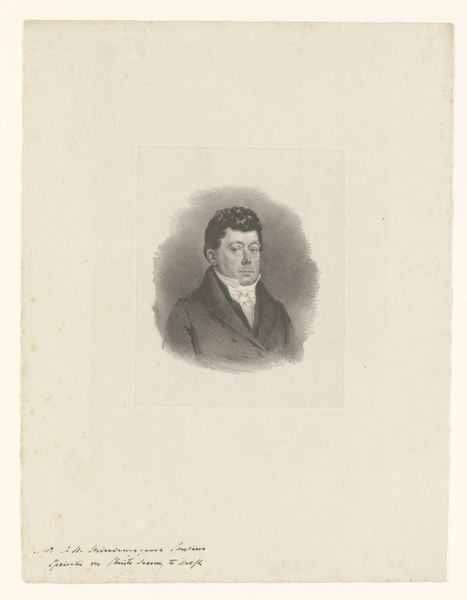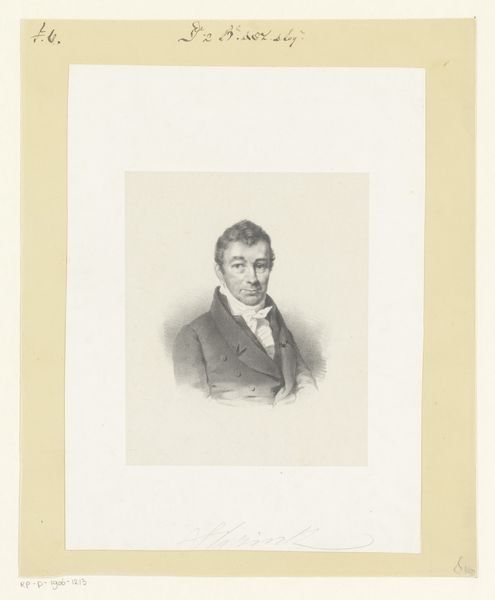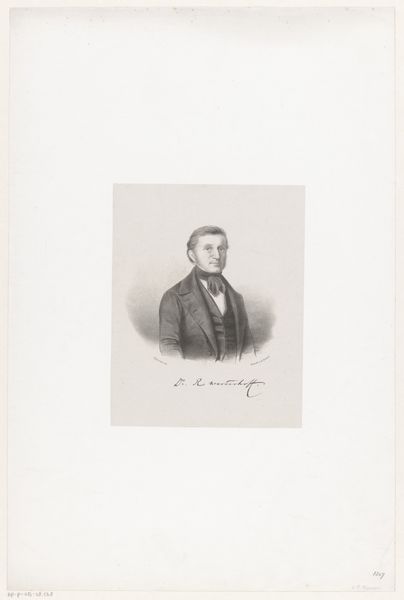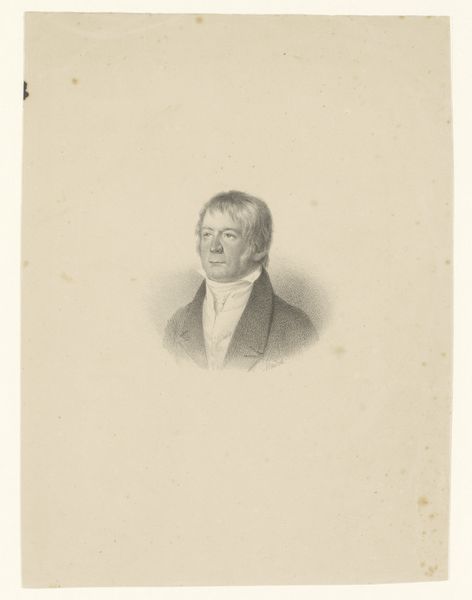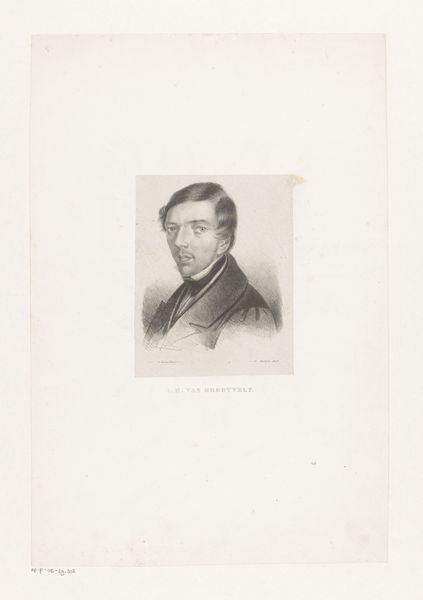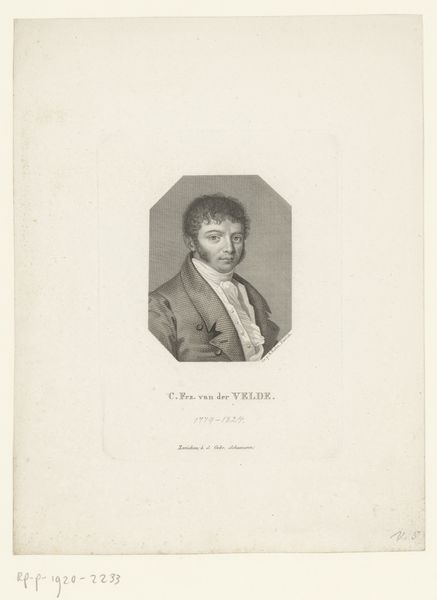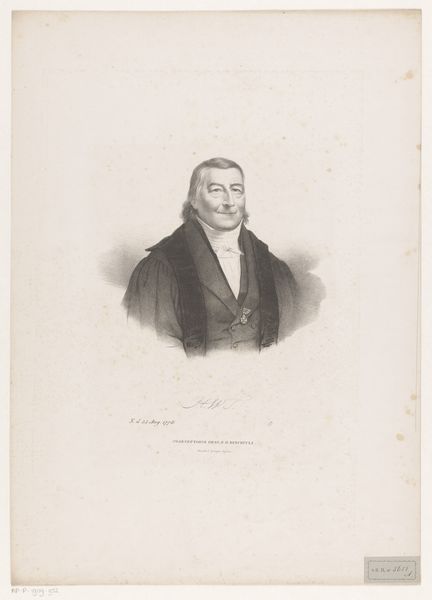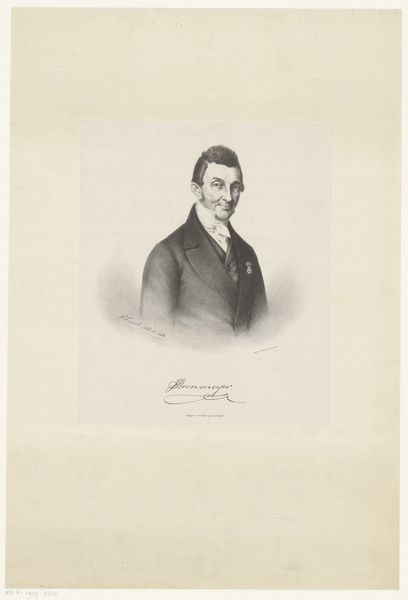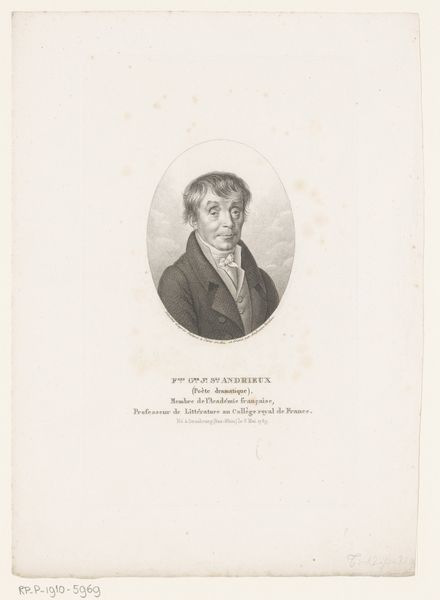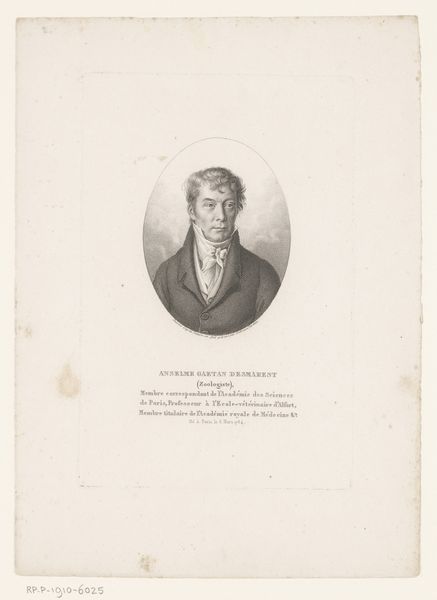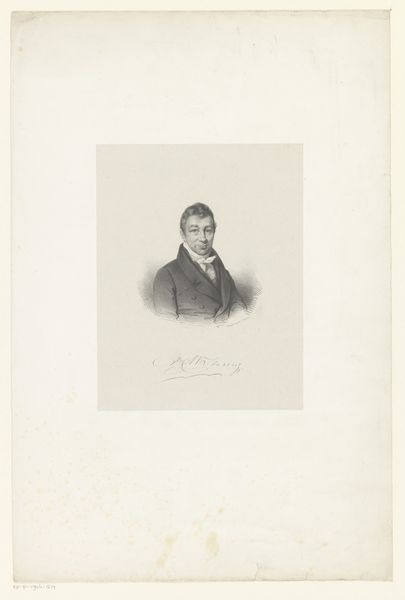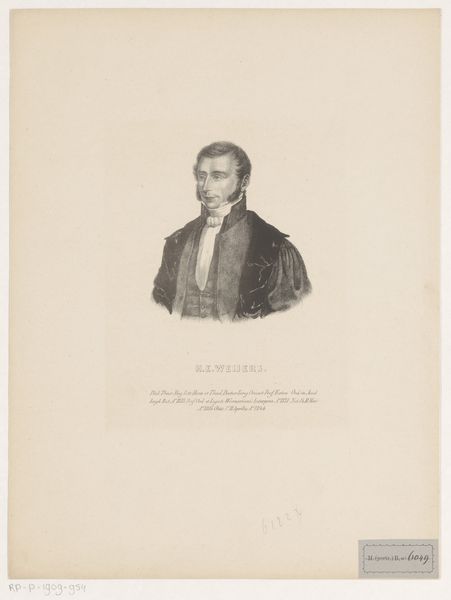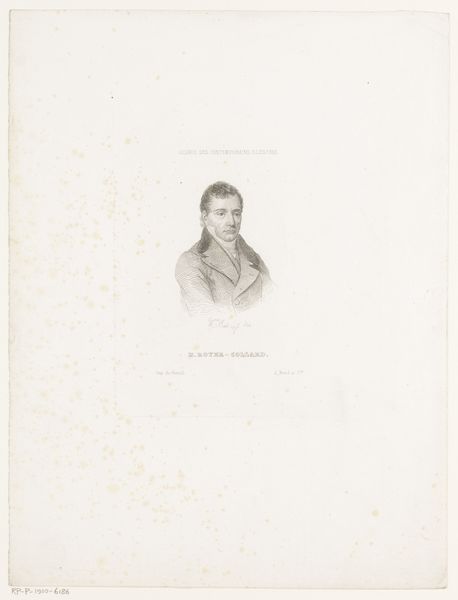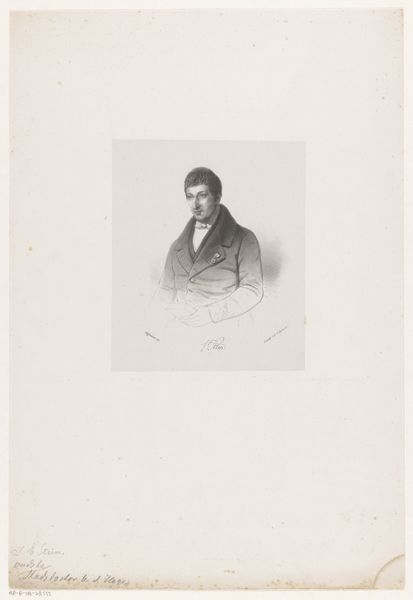
drawing, pencil
#
portrait
#
drawing
#
pencil drawing
#
pencil
#
academic-art
Dimensions: height 309 mm, width 240 mm
Copyright: Rijks Museum: Open Domain
Curator: Welcome. Before us is a pencil drawing from the 19th century, titled "Portret van François Broussais," by Guillaume Philidor Van den Burggraaff. Editor: My first impression is of formality and almost scientific detachment, a study more than a celebration of the sitter. There's a certain reserve to the entire piece. Curator: Precisely. Portraits in this era frequently acted as records and embodiments of status. Note how the circular framing lends it the feel of a classical medallion. What symbols do you perceive in the presentation? Editor: Well, I immediately notice the detailed work on the coat – you can almost feel the weight and texture of the cloth through the artist's skilled use of pencil. The care taken with rendering the material speaks to the importance placed on bourgeois presentation. Curator: Indeed. Clothing in portraiture, and especially the buttons and decoration of military and state dress, acts as shorthand for societal position and virtue. Broussais appears poised between ambition and intellectuality. His medical reforms likely stirred deep social currents. Editor: I’m interested in the drawing's medium and technique, pencil on paper, allowing for subtle shading, building texture. The relative affordability of paper meant a wider circulation of images, beyond just oils for the wealthy elite. Do we know if multiple copies were produced? Curator: It’s very possible. This technique would lend itself to wider dissemination. Broussais, a physician, advocated controversial reforms. Such portraiture becomes almost propaganda—circulating not just an image but an ideology. Editor: That's it: the *material* realities shaped the distribution of knowledge and power, using affordable material to convey controversial ideas. It speaks volumes about accessibility and influence. Curator: It transforms the image into a carrier not only of likeness but of intellectual and social tension. Thank you for underscoring this vital interplay. Editor: Thank you; a final thought - examining the tangible legacy through accessible materials makes history come alive.
Comments
No comments
Be the first to comment and join the conversation on the ultimate creative platform.
